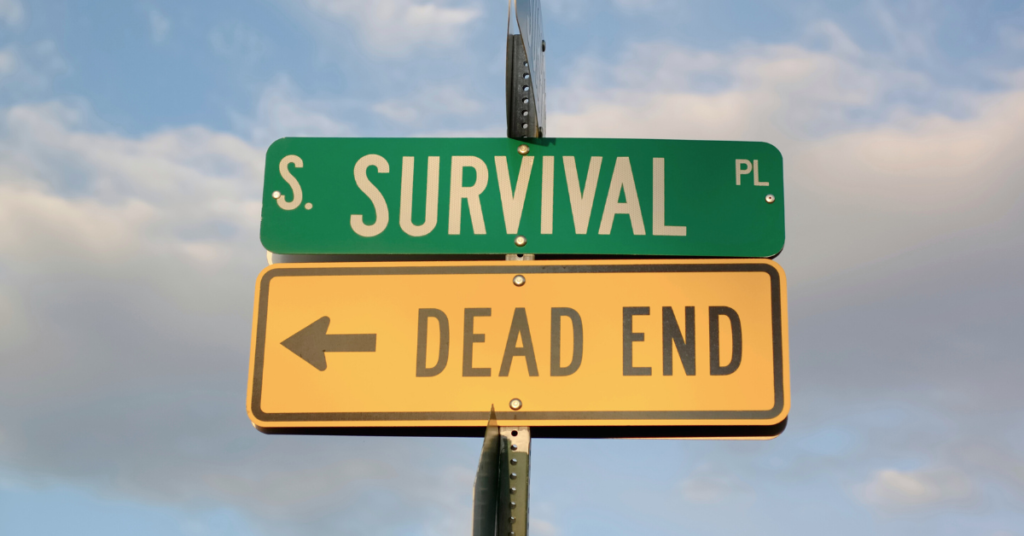In emergency situations, time is always a critical factor for survival. When faced with extreme circumstances, having an understanding of the Survival Rules of 3 can significantly increase your chances of surviving.
Being able to build a fire, find or make clean water, prevent blood loss, and donning rain gear could save your life during a SHTF disaster scenario or simply during a hiking trip when the weather takes a drastic turn.
What Are The Survival Rules of 3?
The rule of 3 highlight the maximum time frames for survival without essentials – air, shelter, water, and food. By adhering to these principles and acquiring the necessary skills and knowledge, most people like preppers and survivalists can be better prepared to tackle any crisis scenario that may arise – and help keep you alive for at least a few weeks on your own during an emergency.
#1 Survival Rule: 3 Minutes Without Air
Air is unquestionably the most vital element for immediate survival. Without it, the human body can suffer severe damage or even face death within just a few minutes. Practicing breathing techniques, staying calm, and understanding air quality in unfamiliar environments is essential to achieve this survival rule of 3 successfully.
We can survive 3 minutes without air.
How is the Brain Affected Without Air?
The human brain is a complex organ that requires a constant supply of air to function optimally, helping the blood’s ability to circulate oxygen. As survival experts quickly note, air is always a first priority. Air is the fuel that powers the neurons, allowing them to communicate and perform their essential functions.
However, when air is lacking, even for short periods, especially when clean air is unavailable due to an emergency, it can severely affect brain health and overall well-being.
Allergic reactions to a food or other substance can cause you to go three minutes without air or longer. If the reaction is a dire one, it places you in real danger.
To understand the consequences of oxygen deprivation, we must first recognize the crucial role that air plays in brain function. Air is the primary source of energy for brain cells, allowing them to produce adenosine triphosphate (ATP). This molecule stores and releases energy.
There are no other priorities in survival rule of 3 protocols that are more immediate than air. Without sufficient air, brain cells struggle to generate ATP, leading to impaired functionality.
When the brain is temporarily deprived of air, whether due to a sudden event or a medical condition, repercussions become evident almost instantly.
Symptoms of air deprivation may include confusion, disorientation, dizziness, weakness, and, in severe cases, loss of consciousness. These immediate effects are alarming and necessitate immediate medical attention.
If the lack of oxygen persists for more than three minutes or is more severe, it can have long-term consequences on the brain. Research has shown that extended periods without air can cause permanent damage to brain tissues. [1]
One well-known example is stroke, where a blood clot or a ruptured vessel disrupts the oxygen supply to a specific region of the brain, resulting in irreversible neurological deficits.
Furthermore, a lack of oxygen can have life-threatening cumulative effects, increasing the risk of cognitive decline and neurodegenerative diseases such as Alzheimer’s and Parkinson’s.
Even moderate deprivation of air over an extended period can contribute to the gradual degeneration of brain cells and the deterioration of cognitive functions like memory, attention, and problem-solving skills – and the overall ability to survive.
Performing the Heimlich Maneuver and CPR
In emergency situations where someone is choking or experiencing cardiac arrest, acting swiftly is crucial for preventing oxygen deprivation and potentially saving a life. The Heimlich maneuver and CPR techniques have proven life-saving interventions, enabling common people to become heroes in critical moments.
What is the Heimlich Maneuver?
The Heimlich maneuver is a technique used to dislodge objects blocking a person’s airway, allowing the ability to focus on the next priority, increasing the flow of air into the lungs essential for breathing – which is the whole point of the Heimlich maneuver.
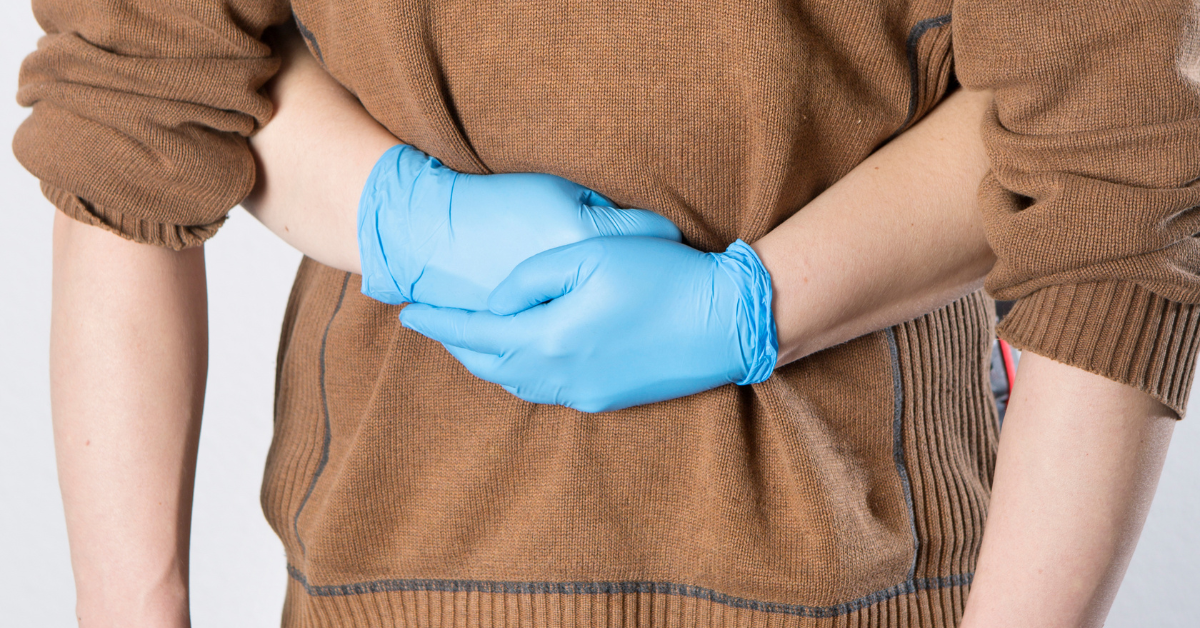
Step-by-Step Execution of the Heimlich Maneuver:
1. Stand behind the choking individual and assess the situation.
2. Place your hands just above their belly button, forming a fist with your dominant hand.
3. Grasp your dominant hand with your other hand and deliver firm upward thrusts inward and upward, repeating until the object is cleared.
What is CPR?
CPR (Cardiopulmonary Resuscitation) is a life-saving technique that combines chest compressions and rescue breathing to keep oxygenated blood flowing to the brain and vital organs during cardiac arrest to increase the victim’s chances to survive.
The success rate of giving CPR will vary depending upon the issue the stopped the flow of air.
The CPR is needful when someones heartbeat or breathing has stopped.
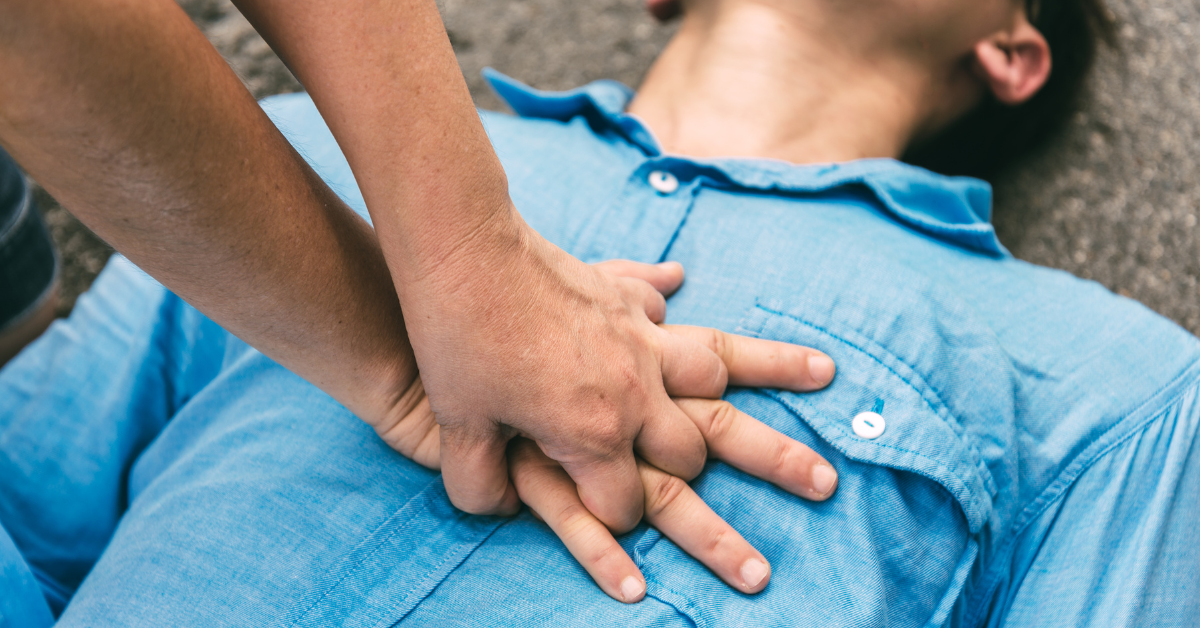
Performing CPR on Adults:
1. Check for Response – Tap the person and shout “Are you okay?
When the person can’t response you should act quickly!
2. Check Breathing: Is the chest moving? Listen for breath sounds and feel the breath on your cheek.
3. Call for Help: Check if there are others around that can help you and for sure call 911 for emergency medical services.
If you’re not alone ask someone else to do so. But if you are alone, use a speakerphone to avoid interruption.
If the person is not breathing, start CPR!
- Kneel next to the neck and shoulders.
- Place the heel of one hand on the center of the chest (Between the nipples).
- Position your elbows straight.
- Push hard at a rate of 100-120 compressions per minute, allowing the chest to fully recoil after each compression.
- Compress the chest downward at least 2 inches (5 cm) deep.
5. Rescue Breaths: If comfortable, provide rescue breaths in a ratio of 30 compressions to 2 breaths.
- Tilt the persons head back slightly to open the airway.
- Pinch the nose shut.
- Now, cover the mouth with yours. So, that there is a good seal.
- Give deep breath (1 second long) to the person. Make sure the chest rise visibly.
- Second rescue breath in the same way.
Performing CPR on Children and Infants:
1. Assess responsiveness and activate emergency medical services before initiating CPR!
2. Rescue Breaths first: Before starting with chest compressions, begin to give 5 rescues breaths.
- Children: Depending on the size of the child, cover mouth or nose and mouth with your mouth.
- Infants: Cover the nose and mouth with your mouth to perform the rescue breaths.
3. Chest Compression: Push hard at a rate of 100-120 compressions per minute, allowing the chest to fully recoil after each compression.
- For children (1-8 years old), use one or two hands according to the child’s size, delivering compressions at one-third of the chest depth (up to 2 inches/ 5 cm)
- For infants (below 1 year old), perform CPR with two fingers on the center of the chest, delivering compressions at one-third of the chest depth (1 inch/ 3 cm)
#2 Survival Rule: 3 Hours Without Shelter
This survival rule of 3 hinges upon both your Survival Skills and natural materials you can find to create an emergency abode. Shelter serves as a protection against the elements, maintaining body temperature and shielding us from extreme weather conditions.

In emergency situations it is extremely important to seek or create a shelter as soon as possible to avoid hypothermia, hyperthermia, or other weather-related ailments is a survival priority.
You can survive 3 hours without shelter in harsh conditions.
Use common sense and learn how to construct a temporary shelter with natural resources to stay warm and use pack proper attire and survival gear like tarps, mylar blanket, paracord, and related emergency supplies to make a shelter and enhance your chances to survive in a life threatening situation.
Following these survival rule of threes techniques and pack (and know how to use) proper survival gear, to ensure you never go several hours without proper shelter.
Not only will a survival shelter protect you from the cold, it can also provide relief from the sun to ward off a heat stroke, a crucial survival rule of 3 technique.
A safely constructed shelter can also offer a dry space to find tinder to build a fire to warm your clothes is they were subjected to icy water, to boil drinking water to make it potable, and cook food.
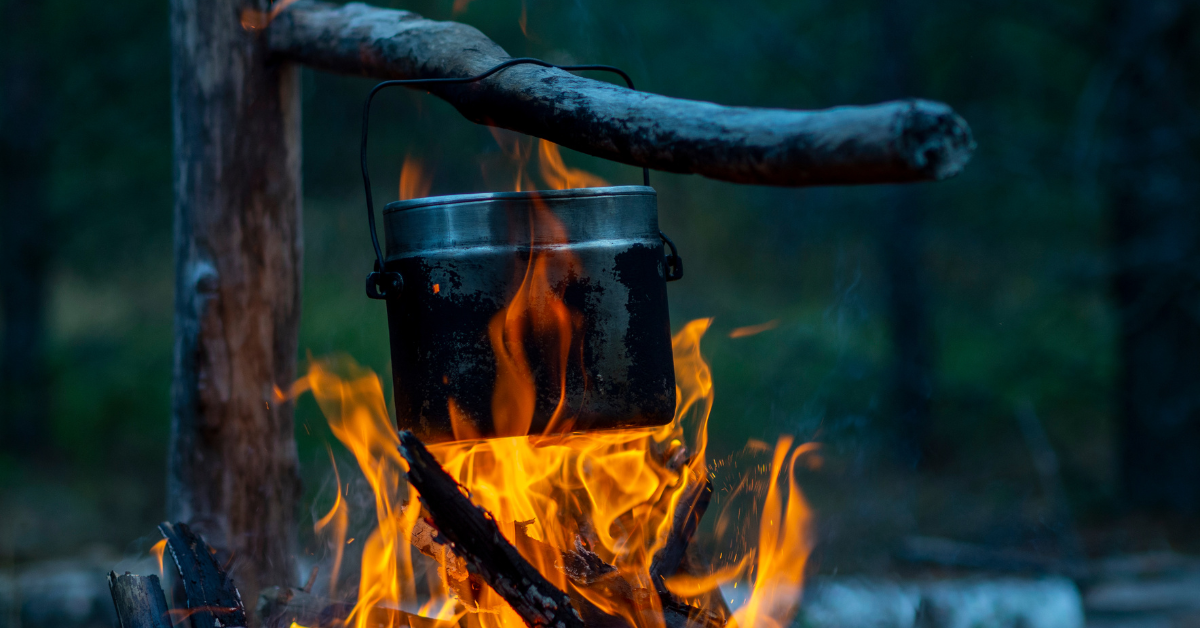
Most people who survive three hours without shelter have packed appropriate survival gear, know how to purify water, can build a water filter out of found natural items, can build a fire, do not panic, stay calm and keep a positive attitude, and have keenly focused on learning all the survival rule of 3 protocols.
Surviving Three Hours in Harsh Environments
Preparing for and properly managing exposure to extreme cold temperatures is crucial for personal safety and survival. The risk of frostbite and hypothermia, both serious medical conditions, increases significantly when you are not prepared and in harsh environments.
It is essential to recognize the signs and symptoms early to prevent permanent damage when trying to remain in compliance with the shelter survival rule of 3 necessities.
Can you eat snow? This should always be a last resort when you do not have enough water. It is a worry when going 3 hours without shelter in a cold environment because it will chill your internal temperature.
As mentioned earlier, if you can build a fire to warm the water, drinking it will not reduce your core temperature and can help prevent frostbite and hypothermia.
Signs and Symptoms of Frostbite
Frostbite occurs when skin and underlying tissues freeze due to cold temperatures or being exposed to icy water in rural areas. It primarily affects exposed body parts and extremities such as the hands, fingers, feet, and toes.

Initial stage:
- Cold, pale, or grayish-yellow skin
- Prickling or numbness
- Hard or waxy appearance
Intermediate stage:
- Swelling and blistering
- Patches of white or bluish-gray skin
- Intense, throbbing, or aching pain
Advanced stage:
- Severe pain or a complete absence of sensation
- Blackened or dead tissue (gangrene)
- Potential amputation if left untreated
How To Prevent Frostbite
Dress appropriately:
- Layer clothing to trap heat, using materials such as wool and thermal fabrics.
- Keep skin covered with hats, scarves, gloves, and warm socks.
- Choose windproof, waterproof, and insulated outerwear for extra protection.
Protect vulnerable areas:
- Use hand and toe warmers, available as disposable packets, when necessary.
- Ensure boots and shoes fit well and are insulated.
- Use insulating insoles or for added warmth.
Stay dry:
- Avoid sweating excessively by regulating clothing layers appropriately.
- Wear moisture-wicking base layers to keep sweat away from the skin.
- Pack extra clothing to change into if needed.
Signs and Symptoms of Hypothermia
Hypothermia is a potentially life-threatening condition, especially when in a harsh environment during a survival situation when the body loses heat faster than it can produce it. It requires immediate attention as it can lead to organ failure and death.
Packing a first aid kit with emergency hand warmers is highly recommended.

Mild hypothermia:
- Shivering
- Cold and pale skin
- Fatigue or lethargy
Moderate hypothermia:
- Intense shivering or inability to shiver
- Slurred speech
- Clumsiness or lack of coordination
Severe hypothermia:
- Confusion or memory loss
- Slow, shallow breathing
- Weak or irregular pulse
Preventing Hypothermia
Layer clothing effectively:
- Wear multiple layers to trap warmth and allow airflow for moisture management.
- Insulate with materials like fleece or down jackets under windproof outerwear.
Seek appropriate shelter:
- Construct an emergency shelter, such as a debris hut or snow cave, to block wind and retain warmth.
- If indoors, ensure proper insulation and use blankets or sleeping bags for extra warmth.
Consume warm, high-energy foods and liquids:
- Eat small, frequent meals to maintain energy levels during a survival situation.
- Drink warm beverages and avoid alcohol, which can increase heat loss.
#3 Survival Rule: 3 Days Without Water
Water is crucial for maintaining optimal bodily functions. Dehydration can quickly lead to exhaustion, cognitive impairment, and, ultimately, death.
Most people like preppers have a water supply plan, including identification and purification methods for existing water sources.

You can survive 3 days without water.
Always treat suspect water before getting sick from bad water: Invest in portable water filters and water purification tablets. Consider emergency water storage options, such as large containers or water purification systems, to ensure a consistent supply.
You can build your own Survival Kit or buy a Premade Bug But Bag to be all-time-safe with clean and drinkable water.
The survival skills you possess to prevent getting dehydrated hinder or enhance your survival ability.
Severe dehydration can have significant physical and mental effects.
The Physical Toll of Dehydration
- Impaired Physical Performance: Dehydration can directly impact physical performance, compromising endurance, strength, and overall stamina.
- Increased Risk of Heat-Related Illnesses: When humans lack sufficient water, it struggles to regulate temperature effectively, leaving individuals susceptible to heat exhaustion and heatstroke. Inadequate hydration can compromise the body’s ability to dissipate heat and impair cardiovascular function, leading to potentially fatal heat-related illnesses.
- Negative Effects on Kidney Function: Even mild dehydration elevates the risk of kidney stones and urinary tract infections, both of which can cause immense discomfort and long-term health complications. Maintaining proper hydration allows the kidneys to efficiently filter waste products and maintain fluid balance, reducing the risk of these ailments.
- Reduced Cognitive Performance: The brain is highly sensitive to changes in hydration status. Dehydrated individuals experienced impaired short-term memory, increased fatigue, and reduced attention span. Proper hydration fosters optimal brain function, enabling improved memory, focus, and overall cognitive performance.
- Mood Alterations and Mental Fatigue: Severe lack of water can lead to irritability, anxiety, and depressive symptoms. Even mild instances of being dehydrated can negatively impact mood, leading to decreased motivation and increased feelings of fatigue. Ensuring adequate hydration is vital for maintaining positive mental well-being.
#4 Survival Rule: 3 Weeks Without Food
While food is not an immediate priority because we can survive 3 weeks without it, food still plays a vital role in long-term survival in a harsh environment. To survive that long going without food, it means that you have enough water.
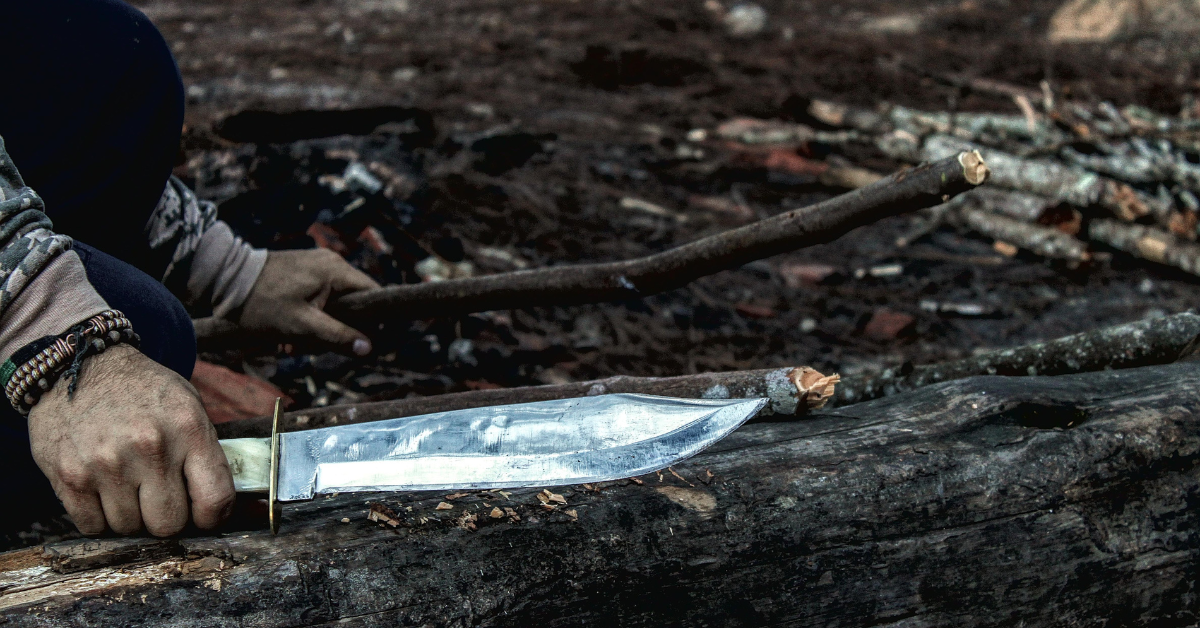
Understanding how to forage, hunt, and fish for sustenance can provide most people and survivalists with extended survival options.
Other priorities that should be considered when honing survival skills include:
- Learning to identify edible plants.
- Basic trapping survival skills.
- Building a fire without matches or in the rain and acquiring knowledge on local wildlife.
Additionally, stock up on Non-Perishable Food Items and learn how to ration food supplies efficiently.
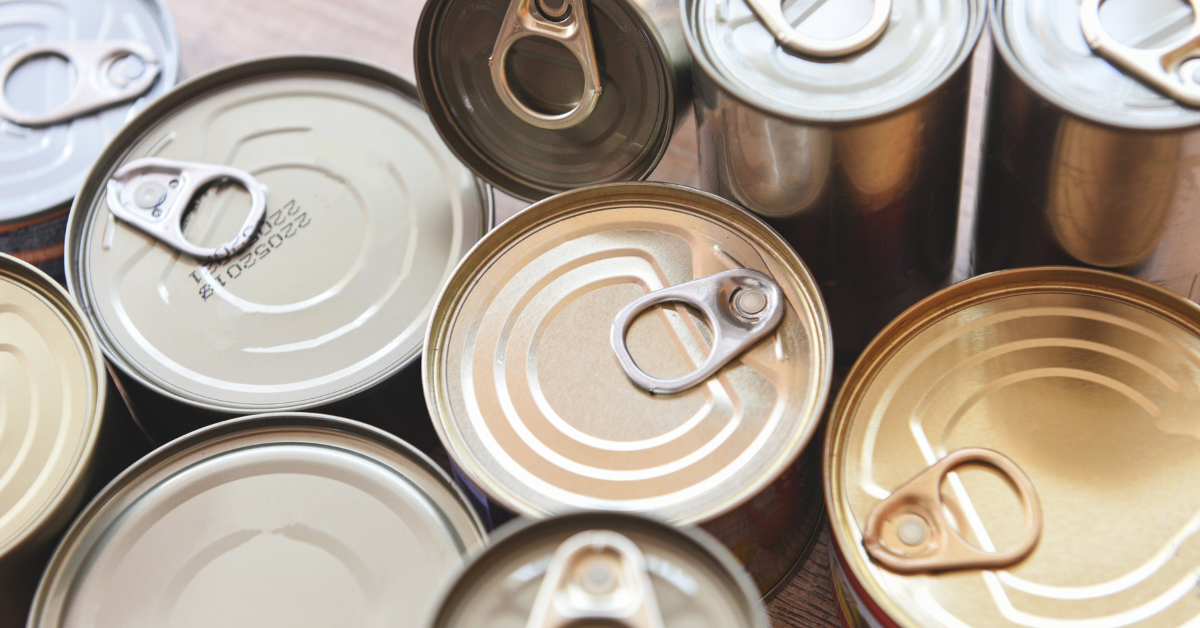
In extreme survival situations, when the only constant is uncertainty, humans can undergo a myriad of physical and mental impacts surviving 3 weeks without food included. Among these survival priorities, the effects of starvation are the most challenging and consequential.
Being prepared to find safe wild edibles and being able to cook survival food on a fire will help increase your chances of preventing starvation during an emergency.
The Science behind Starvation
When deprived of food, the body initiates a complex series of adaptations to ensure longevity during a wilderness survival situation. Initially, our digestive taps into glycogen stores in the liver and muscles to meet energy requirements. However, within 24-48 hours, these stores deplete, forcing the our internal organs to shift gears and enter an austere state known as ketosis.
During ketosis, the liver produces ketones from fat stores, which the brain can use as an alternative fuel source. This adaptation allows a person to sustain life for a limited period without experiencing immediate shutdown.
Physical Impacts of Enduring Starvation
The physical toll of starvation on the body is profound, with significant changes occurring in various organ systems. The most evident effects include extreme weight loss, muscle wasting, and a reduction in overall body mass.
Studies have indicated that during three weeks of starvation, individuals can lose up to 25% of their initial body weight, primarily composed of muscle. The body cannibalize muscle tissue for energy, resulting in weakness, diminished physical performance, and a compromised immune system. [2]
Starvation and the Digestive System
The digestive system undergoes substantial alterations. As food intake diminishes, the gastrointestinal tract slows down to conserve energy. This can lead to constipation, abdominal pain, and feelings of discomfort when the food survival rule of 3 needs are not achieved.
Stomach acid production declines, further impairing digestion and nutrient absorption. Furthermore, as starvation progresses, the body may begin to break down vital organs to provide fuel, which can result in irreversible damage and organ failure if not addressed.
Mental and Emotional Implications
Starvation also takes a tremendous toll on our mental well-being. Prolonged periods without food trigger a state of hibernation-like torpor, where cognitive functioning slows down to conserve energy. While this adaptation can be crucial for survival, it also leads to severe psychological consequences, such as impaired decision-making, difficulty concentrating, and mood swings.
Additionally, research suggests that hunger and food deprivation can trigger anxiety, depression, and even hallucinations if the needs of this survival rule of 3 are not met.
Survival Mindset Considerations
In survival situations, staying calm might be the most essential skill one can possess. In moments of adversity, a calm and composed mindset not only increases your chances of survival but also allows you to think clearly and make effective decisions.
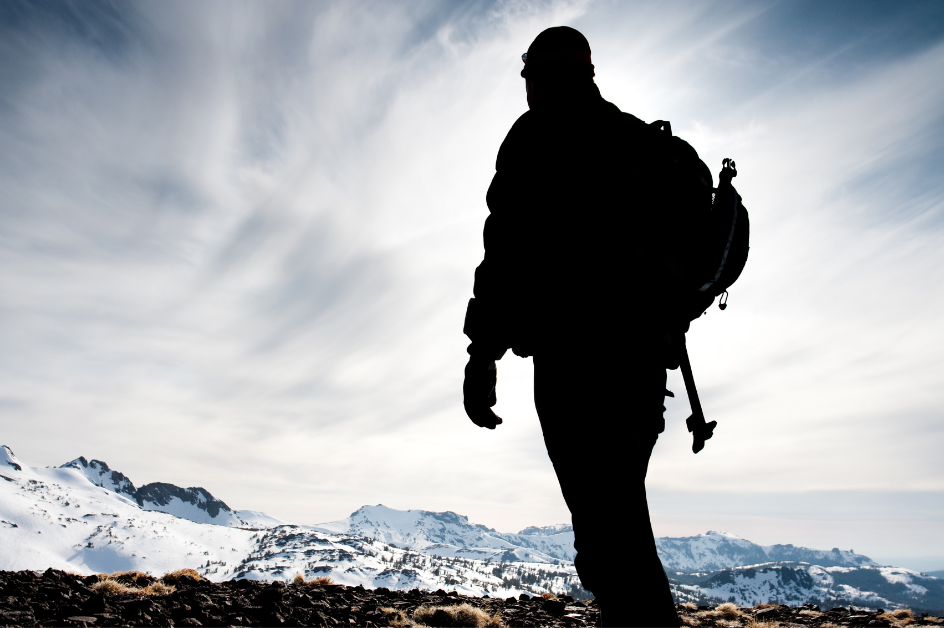
Understanding the Impact of Panic
Panic has long been recognized as a detrimental factor in emergency situations. When panic takes over, the mind becomes clouded, decision-making becomes impaired, and rational thinking goes out the window. An excellent recent example of this can be seen in the aftermath of natural disasters, where panicked individuals often hinder the rescue efforts and exacerbate the overall chaos.
Enhancing Clarity and Decision-Making
Staying calm allows you to think clearly and make rational decisions. By focusing on what needs to be done, such as following the survival rule of 3 emergency protocols, you can prioritize your actions and utilize available resources effectively. Suppressing panic prevents your fight-or-flight response from taking over, enabling you to problem-solve more efficiently.
Practical Tips for Staying Calm
Breathe deeply
Taking slow and deep breaths helps regulate your heartbeat and promotes better oxygenation to your brain, improving mental clarity.
Embrace positive self-talk
Remind yourself that panic will hinder your chances of survival. Repeat positive affirmations to maintain control over your thoughts.
Visualize success
Before embarking on any excursion, visualize yourself overcoming challenges and maintaining composure. This mental rehearsal can help prepare your mind for stressful situations.
Staying calm in a survival situation is a skill you can develop through training and mental preparedness.
Survival training not only equips you with the necessary techniques but also exposes you to controlled high-stress situations. Regular training helps you familiarize yourself with your emotions and learn to manage them effectively.
Final Reflections
The Survival Rules of 3 protocols serve as a compass for preppers and survivalists in preparing for a survival situation. By acknowledging the timeframes for survival without essentials like air, shelter, water, and food, you can effectively prioritize their actions and acquire the critical skills necessary for survival.

Through continuous learning, practicing essential techniques, and investing in the right resources, preppers can maximize their chances of surviving and thriving in any crisis scenario that may arise.
Remember, preparedness is not a luxury but a potential life-saving necessity.
Good Luck!
